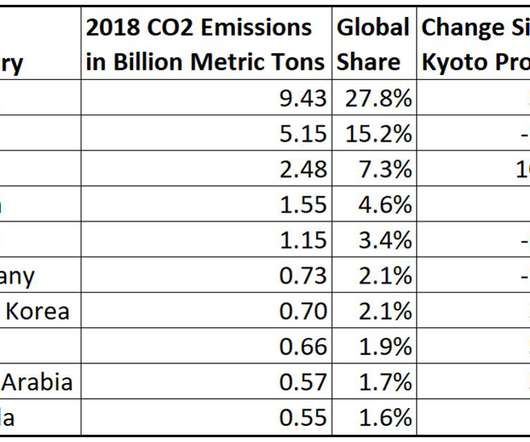Duke Energy Vows to Eliminate Its Carbon Emissions by 2050
GreenTechMedia
SEPTEMBER 18, 2019
Duke Energy is the latest major utility to commit to a carbon-free future, with a plan to cut its emissions in half by 2030 and eliminate them completely by midcentury. utility, due to the company’s size. utility, due to the company’s size. The gas question. This reliance on natural gas aligns Duke with most U.S.



















Let's personalize your content